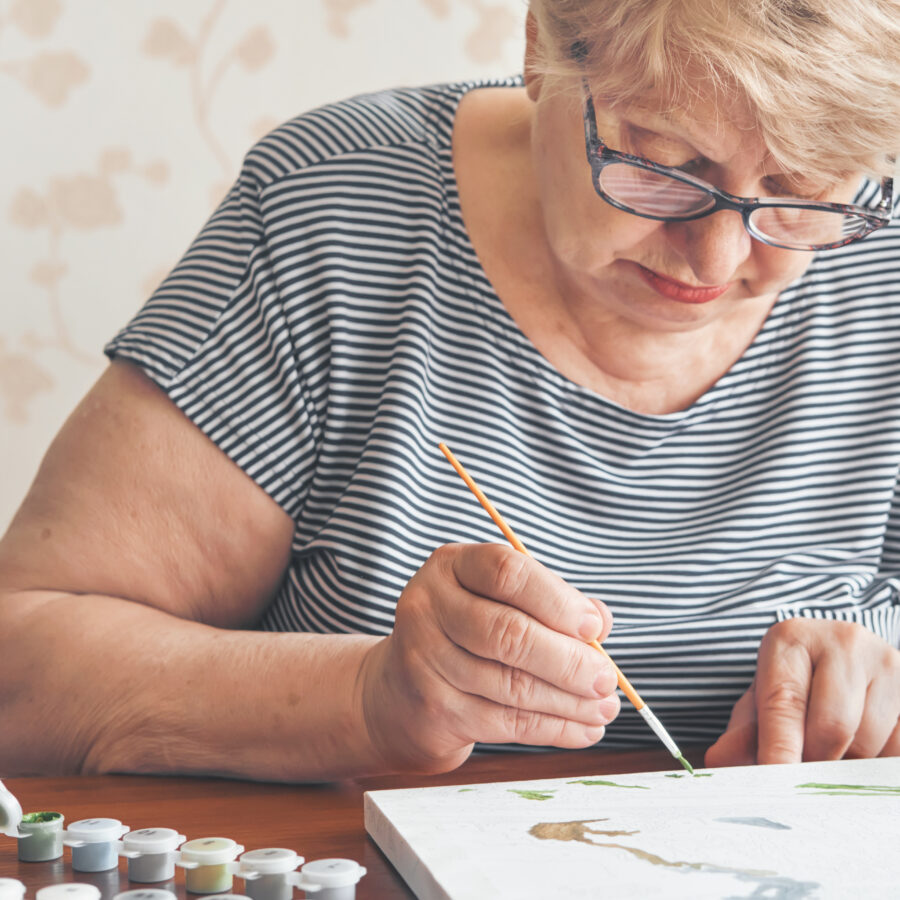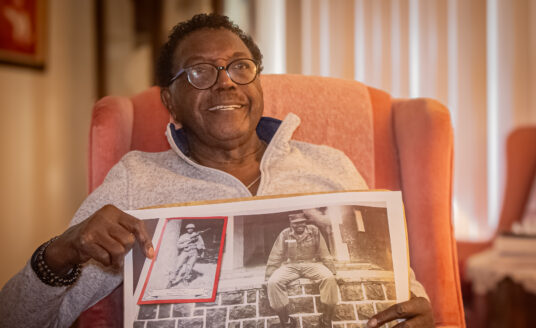When you receive a serious medical diagnosis, it can feel as though it takes over your identity. You begin to think, “I am no longer myself—instead, I am what my diagnosis tells me I am.”

Photo by Thinkstock
Don’t get trapped by this kind of thinking. Even when we carry a diagnosis, we have to continue to live our lives as we normally would. We are more than our diseases and care plans.
People who have been diagnosed with Alzheimer’s disease can live as long as 20 years or more post-diagnosis. With that in mind, family, professional caregivers and community members need to be familiar with the tools that can help people with Alzheimer’s still live their lives to the fullest.
One of these tools is art.
A symbolic and emotional communication system, art doesn’t rely on linear memory and rational language. Rather, art engages our intuition and imagination. The building blocks for expression include movement, gesture, words, patterns, sounds, color, rhythm, texture and smell. As access to rational language falters, a person’s imagination can soar. By including the arts, caregivers can stay connected and foster the “personhood” of someone with dementia or Alzheimer’s.
MEMORY VS. IMAGINATION
You don’t need to be an artist to use art for expression: this tool is available to everyone. Over the last 20 years, I have encouraged care partners to communicate with people who have dementia through creativity. The shift from expecting and correcting memory to opening and connecting through imagination can be profound, especially for family members. After years of distance, the arts can help families rekindle an emotional connection with their loved one.
In one workshop for caregivers, I was demonstrating how they could use open-ended questions to free up the imagination of people with dementia. I suggested the caregivers ask things like: “What would you like to name the person in this picture?” versus, “What’s his name?” Or, “When would you like this story to take place?” versus, “What year is it?”
I noticed that one gentleman in the workshop got a worried look on his face, so I asked him if he was okay. He replied, “Yes, I’m just realizing that I’ve been driving my wife crazy for the last two years—insisting that she remember things.”
That man was Charlie Farrell. Since our conversation, he has created the Carolyn Farrell Foundation to help family caregivers use the arts to communicate with loved ones with Alzheimer’s and other dementias.
TECHNIQUES TO HELP YOUR LOVED ONE BE MORE THAN A DIAGNOSIS
So, how can you learn these techniques? There are a variety of resources available to families and my own work with improvisation and creative storytelling has free online storytelling tools at timeslips.org.
Some long-term care communities have arts or music therapists in-house, or partner with local arts organizations.
But the arts are more than a program to be added to an otherwise hectic day in the life of long-term care staff or family caregivers. They are a communication system that opens our emotions and invites us to share who we are with each other.
Copyright© 2015 Next Avenue, a division of Twin Cities Public Television, Inc.
This blog was originally written by Anne Basting and published by Next Avenue, and has been updated slightly to accommodate a 2023 publish date. The original article can be found by clicking here.
Want to find out more?
If you’d like to stay up to date with Bethesda Health Group, sign up here to receive our blog and newsletters!
"*" indicates required fields
Related Articles
Want to find out more?
If you’d like to stay up to date with Bethesda Health Group, sign up here to receive our blog and newsletters!
"*" indicates required fields



